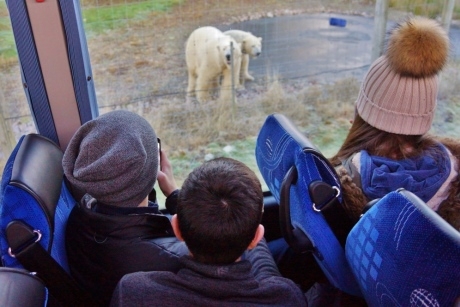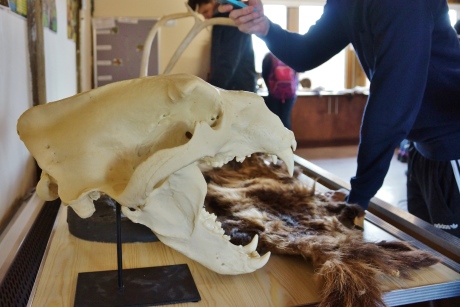School Travel Organiser looks at the educational sessions available at RZSS Highland Wildlife Park.

The RZSS Highland Wildlife Park is set in the Cairngorms National Park in Scotland and is home to more than 200 animals including polar bears, Japanese macaques and more local species such as the Scottish wildcat.
Going to a wildlife park or zoo is a good way for school children to learn more about the environment, and to feel engaged with the world around them. This might include exploring the science of how both humans and animals work, as well as looking at the different habitats in which animals live in.
The RZSS Highland Wildlife Park is in a great location for Geography trips too as it can easily be combined with walks around the Cairngorm National Park, where a wealth of wildlife can be spotted in the wild.
The wildlife park offers 20 curriculum linked sessions which are delivered by one of the park’s education officers. These can be on a variety of topics ranging from endangered species to evolution.
Sessions and activities
The Simple Life Cycles session ties in with the Science curriculum by teaching pupils about life cycles of mammals and birds, focusing on topics including growth, learning, development and parental care. It teaches children about characteristics and the links that offspring share with parents. It also looks at egg laying animals and the differences in their eggs.
From this pupils are encouraged to consider the life cycle of humans, from babies, to toddlers, to children and so on. As well as the physical changes, the mental and emotional changes in humans are also considered. This session is suitable for Key Stages 1 to 2.

Pictured: An animal skull, used for educational sessions.
The Endangered Animals session starts with an introduction into the subject of endangerment and extinction. During this session, pupils will get to work in teams to investigate evidence provided such as newspaper articles, images and animal biofacts. All the items have links to threats faced by animals, and it is each group’s task to identify what they are.
This session can be linked to Science topics such as habitats and adaptation. It also ties in with Geography as pupils are encouraged to explore the way in which humans can contribute to conserving the world and its wildlife. This session is suitable for Key Stage 1 to 2.
Meanwhile, for Secondary school pupils, the Genetic and Inheritance session also links with the Science curriculum. It uses animals in the wildlife park as examples to look at topics such as inheritance, di-hybrid crosses, mutations and genetic diversity. This session also involves interactive activities such as animal handling in order to gather a further understanding of variation.
For schools on a search for creativity, the Art in the Park session uses resources such as animal skulls, skeletons, skins and taxidermy animals to allow students to create drawings and photographs. The session is completed with a self-guided tour of the park, where pupils are encouraged to create pieces of artwork depicting the animals they see as they go round.
On a trip to the Highland Wildlife Park, schools can listen to daily talks about the animals which go into further details about the animals’ lives at the park, as well as discussions about the species. Among these talks are the Reindeer and Wolf Talk, Wolverine Talk and Red Panda Talk, to name a few.
Visiting Information
There is free coach parking at the park and coach drivers will receive free entry.
There are picnic spots dotted around the wildlife park for groups to enjoy packed lunches.
Teachers wanting more information should email education@rzss.org.uk or visit www.highlandwildlifepark.org.uk/education.
Photo credits: RZSS Highland Wildlife Park.










